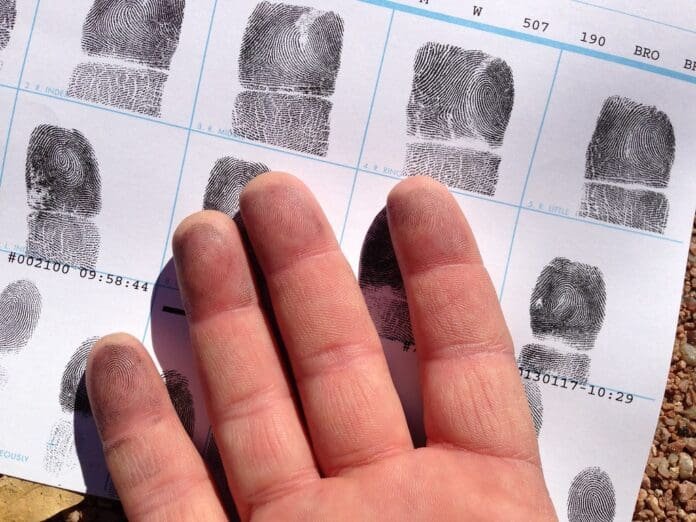A recent study utilized an AI model known as a “deep contrastive network” to accurately determine the exact identity of fingerprints from various fingers of the same person.
“Do you think that every fingerprint is unique?”
While Gabe Guo was at home during the COVID-19 lockdowns, getting ready to start his freshman year at Columbia University, he had a casual chat with one of his teachers, and this question came up. “Little did I know that conversation would set the stage for the focus of my life for the next three years,” said Guo.
Currently a senior undergrad in computer science at Columbia University, Guo headed a research team that examined the topic; co-authors included professor Wenyao Xu from the University at Buffalo. In a recent publication in the Science Advances journal, Guo and colleagues challenged a widely held belief regarding fingerprints. They contend that not all fingerprints are unique.
Interestingly, the work faced multiple rejections from journals before the team made an appeal and successfully got it accepted at Science Advances. Even though Guo had no prior experience in forensics, he claimed that “there was a lot of pushback from the forensics community initially” when the study was underway.

“They claimed that it is a well-known fact that no two fingerprints are the same for the first or second iteration of our paper. That must have greatly enhanced our research as we continued to add data to it until the point when the proof was incontrovertible,” stated Guo.
Study Of Old Prints:
The group achieved astounding results utilizing an AI model called “a deep contrastive network,” commonly used for things like face recognition. The researchers added their twist before entering a database of 60,000 paired fingerprints maintained by the US government. At different times, these pairs belonged to distinct individuals, and at other times, they belonged to the same person (but from different fingers).
This artificial intelligence system was able to determine that “fingerprints from different fingers of the same person exhibited significant similarities.” The result was an astounding 77% accuracy rate for a single pair of fingerprints, indicating that it could distinguish between identical and non-identical fingerprints. The idea that every fingerprint is really “unique” has been called questionable by this discovery.

“We discovered a cogent justification for this phenomenon: the fingerprint’s central curvatures and angles,” he explained.
Guo stated that during centuries of forensic study, people have examined numerous traits known as “minutiae, “They are great for fingerprint matching but not reliable for finding correlations among fingerprints from the same person,” the statement goes, “which relate to the branchings and endpoints in fingerprint ridges that act as the traditional markers for fingerprint identification.,” he remarked. “And that’s the insight we had.”
The authors agreed on the existence of potential biases in the data. According to the study, for the AI system to be applicable in real-world forensics, it is necessary to conduct a more thorough validation by analyzing a larger and more diverse database of fingerprints. The researchers acknowledge that the system may function differently for different genders and races, highlighting the need for further investigation. Nevertheless, Guo expressed his confidence in the potential of this discovery to enhance criminal investigations.
“The most direct use is in helping to provide fresh leads for cold cases in which the fingerprints found at the crime site are from fingers other than the ones that are on file,” he explained. “On the other hand, this won’t only aid in the capture of more offenders. Additionally, innocent individuals who might no longer need to be the subject of needless investigations will benefit from this. And in my opinion, society has won there.”
Is It Just A Minor Issue Or Just Blown Out Of Proportion?
Christophe Champod, a forensic science professor at Switzerland’s University of Lausanne’s School of Criminal Justice, thinks that applying deep learning methods to fingerprint photos is a fascinating subject. He expressed skepticism about the originality of the findings.

He says, “Their claim that there is some correlation between these shapes and fingers has been known since the early days of fingerprinting, when it was done by hand, and has been recorded for many years. He went on, saying, “In my opinion, they oversold their material due to ignorance. Although I’m glad they’ve found something again, it’s a storm in a teacup.”
In the words of Guo, the study has achieved a level of quantification and utilization of fingerprint similarities across different fingers of the same individual that has not been seen before.
“We are the first to explicitly point out that the similarity is due to the ridge orientation at the center of the fingerprint,” Guo stated. “Furthermore, we are the first to attempt to match fingerprints from different fingers of the same person, at least with an automated system.” The authors highlighted the potential usefulness of the system employed in the study for crime scene analysis.
Professor Simon Cole of UC Irvine’s Criminology, law, and society department agreed that the study is intriguing but said that the paper’s claimed practical use is exaggerated. Cole was not a participant in the study either.

On behalf of forensic experts, he said “We were not ‘wrong’ about fingerprints.” Further adding “Finding similarities between fingerprints does not refute the intuitively true but unverified notion that no two fingerprints are “exactly alike.” It has long been recognized that fingerprints from the same individual and different people can be similar.”
If the fingerprints found at a crime scene don’t match those in the police database, the method might be useful, the article claims. Nonetheless, Cole noted that this kind of thing rarely happens because fingerprints are usually taken from all ten fingers and perhaps even the palms by law enforcement. He voiced his dismay over why some people believe law enforcement will have partial fingerprints on file.
The study’s authors feel so sure of their findings that they’ve generously made the AI code open-source to the public for verification. Both Champod and Cole are grateful for this choice.
Guo highlighted that fingerprints aren’t the only thing this study means. “This goes beyond forensics. It has to do with AI. Although fingerprints have been studied by humans for as long as we can remember, this similarity was never observed until our AI examined the data. That illustrates how AI can automatically identify and extract pertinent features.” he stated.
This study, in my opinion, is only the first domino in a lengthy chain of related events. People will use artificial intelligence (AI) to find objects that are hiding in plain sight, like our fingers, in front of our eyes.




